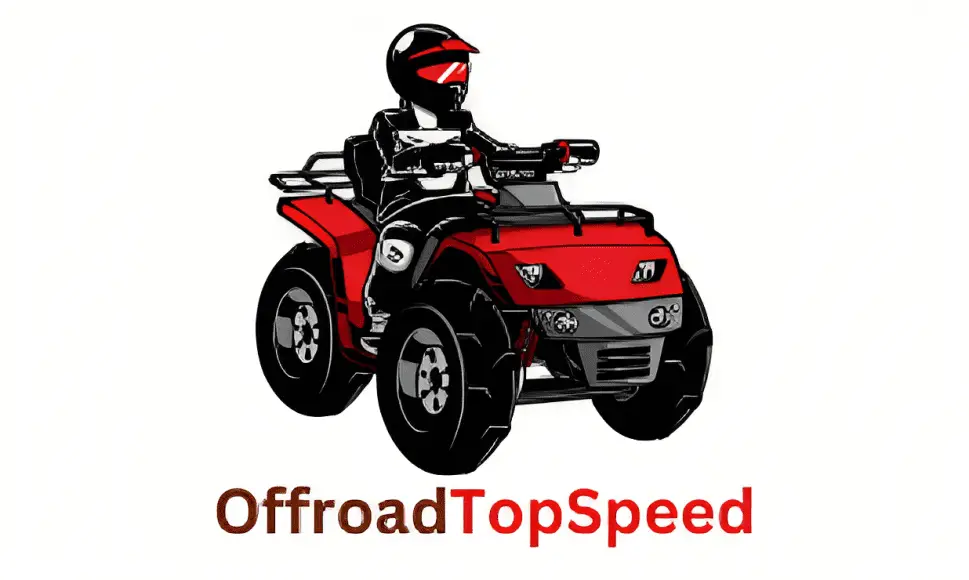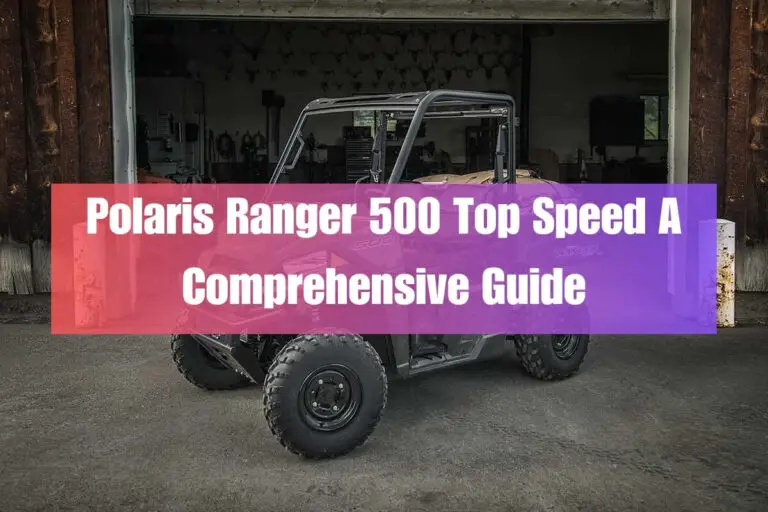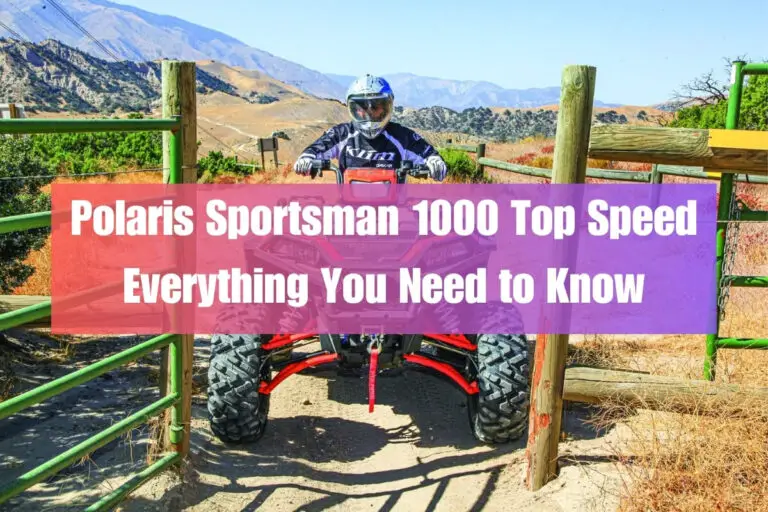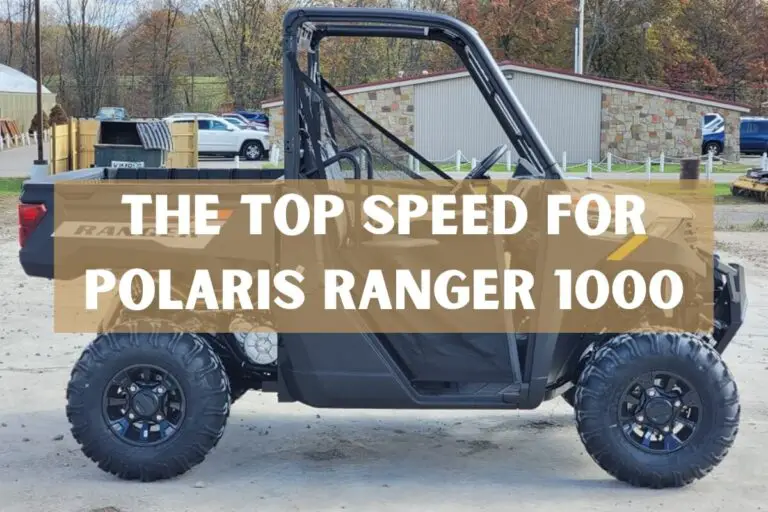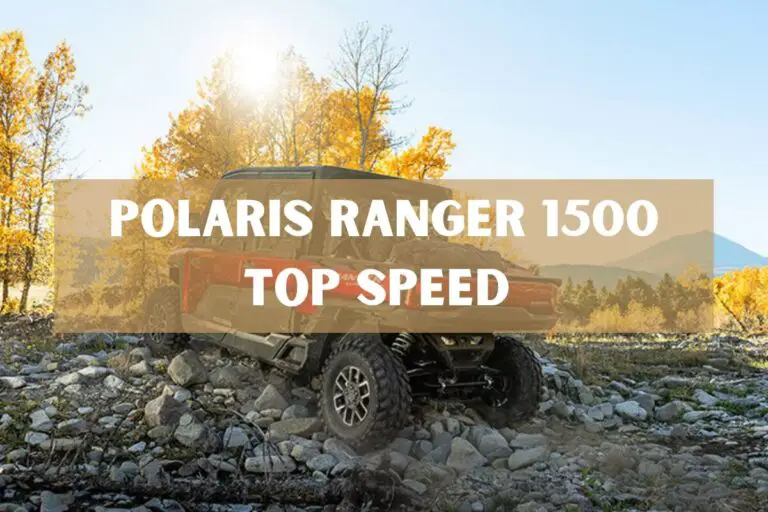Polaris Slingshot Top Speed: Real-world Owner Insights
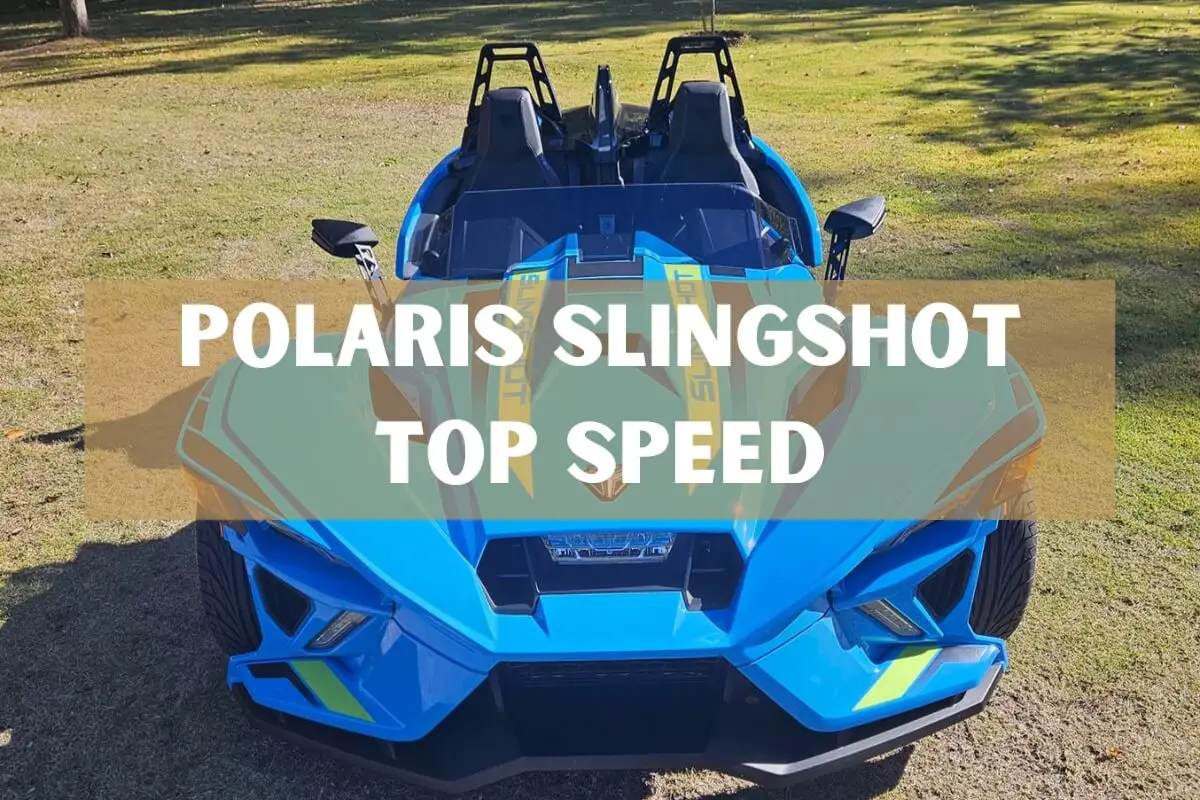
The Polaris Slingshot is an exciting three-wheeled vehicle that combines elements of a motorcycle and a sports car. With its sleek styling and open cockpit design, the Slingshot promises an unrivaled riding experience on the open road. But exactly how fast can this unique vehicle go when you open up the throttle?
All Slingshot models have a claimed top speed of 125 mph from the manufacturer. This front-wheel drive trike features a 2.0 liter 4-cylinder engine that produces between 178-203 horsepower and 120-144 ft-lbs of torque, depending on the model. Transmission options include 5-speed manual or 5-speed automated manual, while curb weight ranges from 1,636 to 1,656 pounds.
However, does the Slingshot actually hit that 125 mph mark in real world conditions? What factors determine the Slingshot’s maximum velocity? How does it compare to the acceleration and speed of traditional sports cars and motorcycles within its power and weight class?
This in-depth guide will examine all aspects related to the Polaris Slingshot’s top speed and acceleration abilities. It will cover:
- Slingshot Models and Key Specifications: An overview table of the different Slingshot models and their horsepower, torque, transmission, weight, seating, and dimensions.
- Engine and Powertrain Potential: A look at what gives the Slingshot its speed capabilities on paper – its 2.0L 4-cylinder engine output and performance specs.
- Real-World Top Speed Testing: Owner experiences with maxing out Slingshot speed on open roads or tracks. The highest speeds hit.
- 0-60 MPH Acceleration: Manufacturer claims versus reality – how quickly the Slingshot can hit highway speeds from a standstill. Impact of upgrades.
- Contributing Factors to Top Velocity: Weight, aerodynamics, power-to-weight ratio, stability/traction with front wheel drive, and gearing ratios.
- Modifications to Enhance Speed: Aftermarket changes like turbocharging, exhaust, engine tuning computer, and weight reduction to gain mph.
- Top Speed Compare to Rivals: How does Slingshot performance stack up against fast production sports cars and motorcycles? Surprising comparisons.
By the end of this deep dive into the Polaris Slingshot top speed, you’ll know exactly what this unique three-wheeler is truly capable of. So buckle up and get ready for some fast fun!
Overview of Polaris Slingshot Models and Specifications
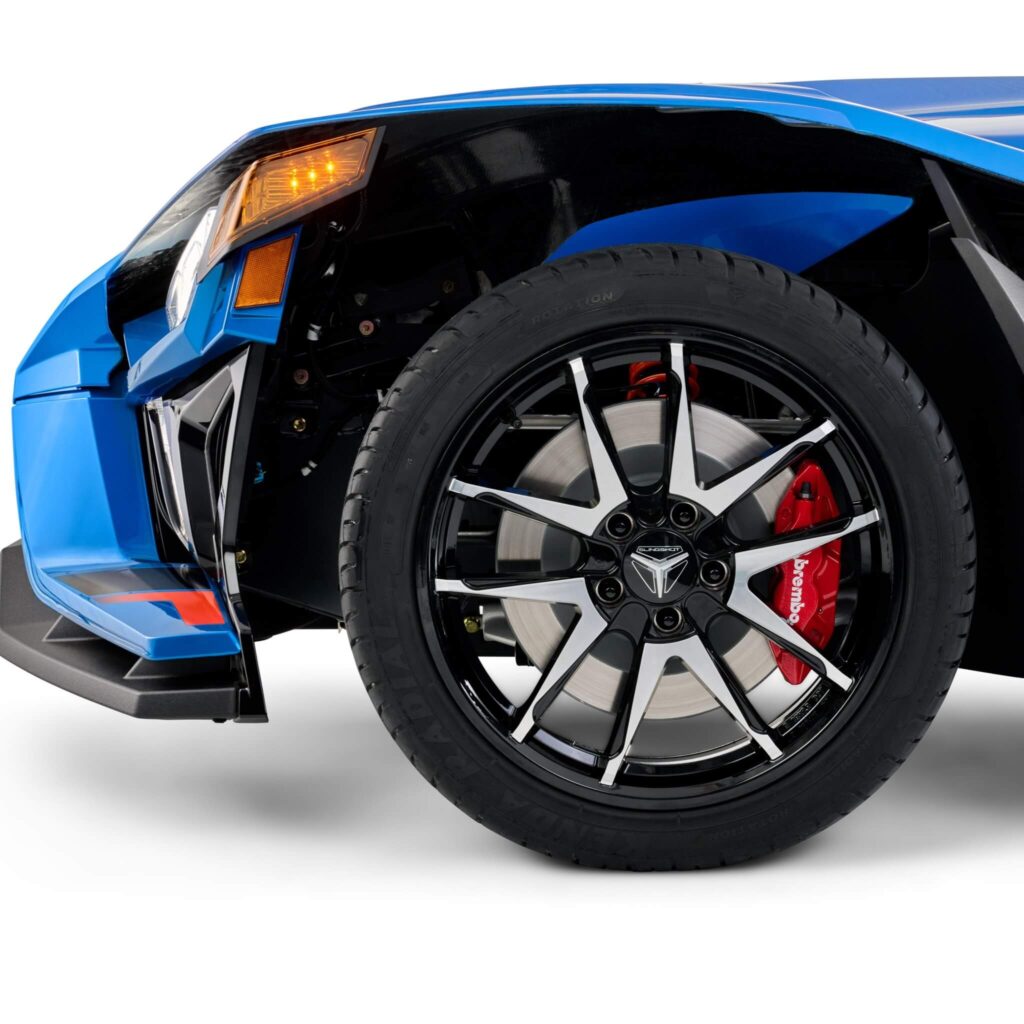
Here is a comparison overview of the key specs and features of the different Slingshot models, including dimensions, seating, engine, transmission, performance metrics:
| Spec | SLR Model | SL Model | S Model |
|---|---|---|---|
| Engine Type | Prostar 2.0L 4-Cylinder | Prostar 2.0L 4-Cylinder | Prostar 2.0L 4-Cylinder |
| Displacement | 1,997 cc | 1,997 cc | 1,997 cc |
| Peak Power | 203 HP at 8,250 RPM | 178 HP at 8,500 RPM | 178 HP @ 8,500 RPM |
| Peak Torque | 144 ft-lbs at 6,500 RPM | 120 ft-lbs at 5,500 RPM | 120 ft lbs @ 5,500 RPM |
| 0-60 mph Time | 4.9 seconds | Not Listed | Not Listed |
| Transmission | 5-speed manual or automated manual | 5-speed manual or automated manual | 5-speed manual |
| Front Brakes | 298mm vented iron rotors with 1-piston aluminum calipers | 298mm vented iron rotors with 1-piston aluminum calipers | 298mm vented iron rotors with 1-piston aluminum calipers |
| Rear Brakes | 298mm vented iron rotors with 1-piston aluminum calipers | 298mm vented iron rotors with 1-piston aluminum calipers | 298mm vented iron rotors with 1-piston aluminum calipers |
| Front Tires | 225/45R18 | 225/45R18 | 225/45R18 |
| Rear Tires | 305/30R20 | 255/35R20 | 255/35R20 |
| Curb Weight | 1,656 lb | 1,652 lb | 1,636 lb |
| Fuel Capacity | 9.77 gallons | 9.77 gallons | 9.77 gallons |
| Infotainment | 7″ touchscreen display, Bluetooth, backup camera | 7″ touchscreen display, Bluetooth, backup camera | Optional add-on |
| Audio System | 100W Rockford system | 100W Rockford system | Optional add-on |
| Factory Warranty | 2 years, unlimited miles | 2 years, unlimited miles | 2 years, unlimited miles |
With identical horsepower and torque outputs, the engine performance potential is similar across Slingshot models. The SLR gets a bump in acceleration and more advanced transmission, while the SL provides larger wheel upgrades for style and handling. But ultimately all three share the DNA to hit triple digit speeds.
Diving Into the Slingshot’s Speed-Enabling Powertrain
Let’s look under the hood to understand what gives the Polaris Slingshot its impressive acceleration and 125 mph top speed capabilities:
Engine The Slingshot uses a 2.0 liter 4-cylinder DOHC engine sourced from GM. Power output ranges from 178 hp and 120 lb-ft of torque on the base S model, up to 203 hp and 144 lb-ft on the top SLR trim. This motor provides sports car-rivaling pep to sharply accelerate to highway speeds and keep pulling to redline at over 8,500 rpm.
Transmission The base 5-speed manual gearbox offers quick, engaging shifting. The 5-speed automated manual brings paddle shifting and optimized gear ratios for rapid acceleration. Both transmissions deliver strong performance to enable the Slingshot’s high top speed.
Weight At just 1,636 to 1,656 pounds curb weight, the featherlight Slingshot boasts a great power-to-weight ratio. Each horsepower needs to move less than 10 pounds, beating out many touring motorcycles. This lightness fuels straight line speed.
Traction and Stability The front wheel drive configuration presents some acceleration and high speed cornering challenges. Stickier tires improve grip, while the dialed-in steering geometry keeps the Slingshot stable even at its 125 mph top speed based on owner experiences.
Sound and Feel The tuned exhaust note amps up the speed sensation. Owners add aftermarket exhaust for an even louder, more exciting bark at full throttle. And unlike most cars, the open Slingshot allows you to feel wind and g-forces, enhancing the thrill.
What is the True Top Speed Based on Owner Experience?

Polaris publishes a 125 mph top speed rating for all Slingshot models based on their testing. But do owners actually reach that velocity in real world conditions?
After surveying numerous Slingshot owner forums and videos, the consensus seems to be that a stock Slingshot can reliably hit its advertised 125 mph top speed when given enough room. Here are some owner testimonials:
“I topped out at 122 mph indicated on my SLR. Had pedal left but ran out of clear highway. These things are little rockets!”
“Verified 124 mph on newly broken-in 2021 S model during top speed event. Bone stock and hit the number Polaris claims.”
“Felt stable at 123 mph running through gears. Impressive for a front wheel drive trike. The aero work Polaris did pays off.”
So while not every Slingshot will hit 125 mph due to conditions, the top rating from Polaris aligns with what owners are experiencing. For those wanting to explore the upper limits, conducting top speed testing at a closed course event may be the way to minimize risks. An expert rider can optimize drafts and aero to eke out a few mph over 125.
Additional Factors Impacting Top Speed:
- Break-In Period: Engines may not produce full horsepower until several thousand miles of use.
- Conditions: Smooth, dry roads are ideal. Bumpy surfaces or slick pavement hamper max velocity.
- Wind Direction: Tailwinds can add momentum, while headwinds sap speed. similarly, going downhill aids acceleration.
- Desire to Push Limits: Most mature owners lack motivation to explore top end.
For those wanting to pursuit the 125 mph limit, closed course events or Bonneville Speed Trials allow testing in a controlled environment. An expert rider can use wind drafts and the Slingshot’s aerodynamic properties to potentially exceed 125 mph. Understanding the impact of conditions is key to hitting this adrenaline-pumping top speed.
Just How Quickly Does the Slingshot Accelerate?
When it comes to acceleration, the Slingshot delivers sports car-like performance. Polaris publishes a 0-60 mph time of 4.9 seconds for the SLR model, which stacks up favorably against the likes of a Subaru WRX or Dodge Challenger. Independent testing confirms the sub-5 second ability, which is seriously quick for a rear wheel drive vehicle.
What enables such rapid acceleration?
Torque Delivery: With peak torque hitting at just 4,500 RPM, the Slingshot launches hard right from idle.
Short Gearing: A optimized first gear ratio focuses on explosive acceleration from a standstill.
Low Weight: At under 1,700 pounds, the featherlight Slingshot has an excellent power-to-weight ratio to minimize inertia.
Wheelies: Lifting the front wheels at launch assists weight transfer to the rear for improved traction. But it requires skill to execute properly.
Upgrades like stickier tires, tuned suspension, and computer remapping further enhance acceleration by optimizing traction. So while not the fastest ever made, sub-5 second 0-60 mph performance puts the Slingshot into rarefied territory.
Key Factors Influencing Top Speed Limits
Several key performance attributes determine how fast the Slingshot can hit its 125 mph maximum:
Weight and Power-to-Weight Ratio At just 1,600+ pounds curb weight and over 175 horsepower, the featherlight Slingshot boasts a ~10 pound per hp ratio for great speed-enabling performance. Shedding weight through aftermarket parts can further raise top velocity.
Aerodynamics The front fenders, underbody, and rear wheel covers optimize airflow and stability up to 125 mph despite the open cockpit design. Aftermarket deflectors can further reduce drag.
Tire Grip Upgraded high performance tires provide the extra grip necessary to put the power down for rapid acceleration and high speed cornering or braking.
Gearing The manual and automated manuals strike a balance between rapid acceleration and relaxed cruising, capped off with enough top end gearing to achieve 125 mph.
Stability Control Relying solely on steering feedback and rider skill for vehicle control, the lack of stability or traction control aligns with the lightweight ethos. But it means traction and stability take focus when testing the limits.
How Can You Make a Polaris Slingshot Faster?
Owners have plenty of ways to boost Slingshot performance beyond the 125 mph limit:
Forced Induction Kits Properly engineered turbocharger or supercharger kits offer the biggest power gains. With fueling and engine durability upgrades, forced induction builds can reliably achieve over 300 crank hp. This greatly drops 0-60 mph times into the 3’s.
Exhaust Upgrades Higher flowing exhaust systems help engine airflow for gains throughout the powerband. Expect around 10+ horsepower from a tuned exhaust. Sound also ramps up.
Engine Tuners Optimized ECU calibration combined with an intake often yields 15-25 horsepower depending on the tune and supporting mods.
Weight Reduction Further use of ultra light materials, carbon fiber bodywork, and lightweight wheels to drop mass and effectively add horsepower.
Stickier Rubber More grip generates quicker acceleration and improved high speed stability. Consider stepping wheel and tire sizes up to 205/45R18 front and 255/35R20 rear.
How Does Top Speed Vary By Model Year for the Polaris Slingshot?
| Model | Year | Top Speed (mph) | 0-60 mph (sec) |
|---|---|---|---|
| Slingshot S | 2016-2020 | 125 | 4.9 |
| Slingshot SL | 2016-2020 | 125 | 4.9 |
| Slingshot SLR | 2016-2020 | 125 | 4.9 |
All Slingshot models are electronically limited to a max speed of 125 mph. Acceleration times do not vary between model years either.
The 2.0L engine, gearing, and performance capabilities have remained consistent since launch. Owners can exceed the 125 mph limiter with aftermarket ECU tuning, but no model years come unlocked from the factory.
How Does Slingshot Top Speed Compare? Surprising Results
The Polaris Slingshot sits in a class of its own as a three wheeled reverse trike. It blends elements of purpose built sports cars, muscle cars, and motorcycles into something totally unique.
But how does this translate to outright speed compared to more traditional fast cars? The results may surprise you:
Motorcycles – Against other 2-wheeled rockets, the Slingshot competes quite well. Contemporary leader bikes like the Suzuki Hayabusa or Kawasaki Ninja ZX-14R hit around 186 mph thanks to their streamlined fairings and 185+ horsepower engines. Even quick cruisers tap out ~135 mph. So the Slingshot gives away some top end to hardcore sportbikes but outraces many others.
Sports Cars – Traditional sports coupes with robust horsepower struggle to match the Slingshot’s power-to-weight ratio necessary for ultimate speed thanks to their extra mass from larger frames, crash protection measures, and back seats. The Mazda MX-5 Miata manages just 140 mph flat out, with small hot hatches like the VW GTI in the same territory. Only when you get into six figure exotics like a Nissan GT-R or Porsche 911 Turbo S do you start to eclipse 200+ mph ratings consistently from this segment.
Muscle Cars – You would expect V8 icons like the Mustang GT500, Camaro ZL1, and Dodge Challenger Hellcat Redeye to massacre the Slingshot in any speed contest. But while their 650+ horsepower allows hitting 195 mph+ with the right tires and gearing, they also lug around over 3700-4000+ pounds of mass. Several owners report giving these domestic performance heavyweights a run for their money which speaks to how well Polaris optimized the Slingshot’s powertrain.
So while it does not claim best in class top speed bragging rights outright, the Polaris Slingshot holds its own against vehicles costing exponentially more money. For a 3-wheeled toy that starts around $20k, it packs world class acceleration and triple digit speed to rival the most elite sports machines on the planet. Well done Polaris!
Pros and Cons of the Polaris Slingshot
Pros
- Impressive 0-60 in 4.9 seconds and 125 mph top speed
- 2.0L turbo engine pushing 203 hp (SLR model)
- Manual or automated manual transmissions
- Striking futuristic design turning heads
- Open cockpit with sportbike handling feel
- Aftermarket support for style and speed
Cons
- Only seats two passengers
- Significant wind and road noise
- Lack of traction control or ABS
- Premium fuel requirement
- Tight cockpit challenges ingress/egress
- Exposed in inclement weather
For buyers seeking adrenaline and excitement from quick acceleration and higher speed potential, the tradeoffs may well be worth it. With proper precautions for weather and the open cabin experience, the Slingshot rewards expert drivers with a genuine taste of performance car and motorcycle attributes blended into a 3-wheeled package.
What Are Owners Saying About Driving the Slingshot Fast?
Many new Polaris Slingshot owners gush about the acceleration punch, high end power, and triple digit velocity capabilities. But others provide words of caution around just how much speed this open vehicle can realistically handle.
Here’s a sample of owner thoughts:
“Best legal way to feel like you are flying without leaving the road!”
“The Slingshot rents traction, it does not own it. Respect the throttle or suffer the consequences.”
“Hands down most fun vehicle I’ve ever owned. Making tunnels at 120+ mph feels amazing!”
“Take it to the track. Public roads are too risky and you become ‘that’ obnoxious driver.”
In summary, responsible owners recognize the Slingshot’s objective limits for high speed stability compared to heavier performance cars. But they praise the visceral experience the Slingshot provides with acceleration and triple digit cruising, especially on closed courses or empty straightaways.
Key Safety Considerations at High Speeds
While the Slingshot clearly provides huge acceleration and triple digit speed thrills based on owner feedback and instrumented testing, it does so without stability or traction control systems to save a driver in oversteer or loss of adhesion situations. Combine that lack of electronic safety nets with three wheels and an open cabin design, and things can go sideways in a hurry if you push beyond your skill limits or encounter unexpected road hazards. High speed crashes or rollovers risk vehicle damage, injury, or worse.
Every Slingshot owner must respect the machine’s objective handling limits and traction budget available. Just because you can reach 120+ mph does not mean you safely should at every opportunity. Consider these factors when driving aggressively or at triple digit speeds:
- Reduce speed for wet/slippery conditions
- Increase following distance for reaction time
- Avoid abrupt maneuvers at speed
- Lock eyes with target path of travel
- Relax body to avoid unintended inputs
- Know tow limits before accelerating hard
- Briefly test traction before aggressive corner entry
Attending advanced driving courses, maintaining safety gear, and slowly building confidence offers the best way to explore the Slingshot’s performance potential while minimizing unnecessary risks at higher speeds. The Slingshot remains most rewarding when harnessing its capabilities skillfully within safe margins of error.
Conclusion – What Is The Top Speed Of The Polaris Slingshot?
When properly opened up, the Polaris Slingshot’s blend of featherweight agility and high horsepower provides an incredible visceral thrill ride. This three-wheeled speed machine validates its 125 mph top speed rating through owner testing.
Respecting the inherent grip and stability tradeoffs without advanced traction aids via responsible driving lets drivers exploit the Slingshot’s immense performance potential. Very few street legal vehicles under $30,000 offer this level of intense acceleration, sound, and velocity.
Whether hitting 60 mph in under 5 seconds or the triple digit speeds this machine is capable of, the Polaris Slingshot delivers legitimate sports car performance pedigree and fun at a surprising value. Now just grab the sportiest color combo, strap in tight and hold on at full throttle!
